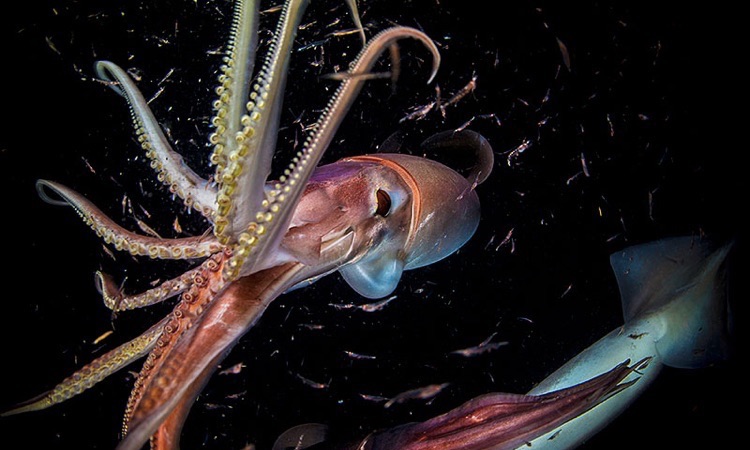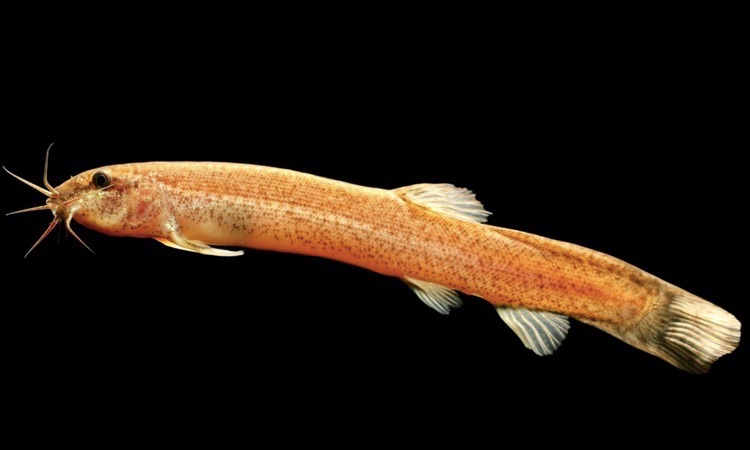Sharks are quintessential creatures in the earth’s ocean. Despite this, many are rare or near the brink of extinction. Below, you can explore a few of the most weird sharks.
From the great white shark to the megalodon, sharks have always held a place in our popular culture and imaginations.
This list features descriptions of twelve of the most thrilling shark species that have ever lived in the earth’s oceans. While some are now extinct, others are quite rare, and many more can still be found commonly swimming throughout various oceans today.
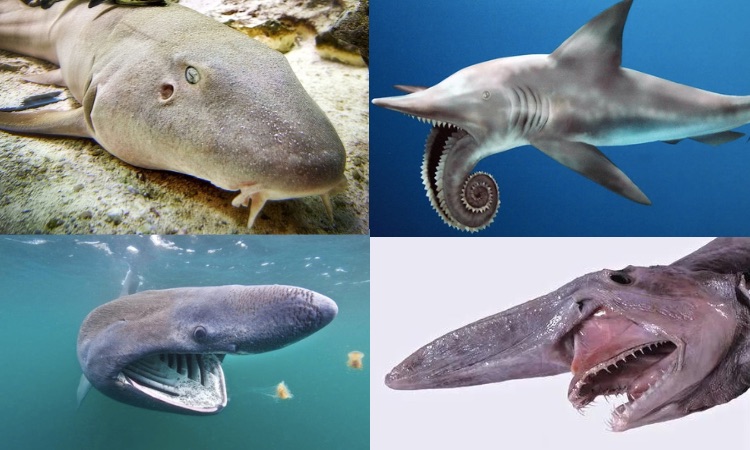
Largetooth Sawfish
Largetooth Sawfish are one of the largest fish on Earth, and can grow to over 6.5 meters in length. But their most defining characteristic is their long rostrum, or snout, which has a number of functions.
Their electrosensitive pores allow sawfish to detect movement of their prey on the seafloor. Additionally, their long “saw” can be used for several purposes: as a tool for digging; to stun prey by thrashing from side-to-side; and protect them from predators.
Goblin Shark
The goblin shark, or Mitsukurina owstoni, is an uncommon type of shark. Its rather unusual and odd appearance is often described as fossil-like.
The deep-sea creature is easily identifiable with its pink-toned skin and unique snout shape. It is elongated and flat, resembling a snake with a protruding jaw full of skinny, razor-sharp teeth.
Reaching lengths of up to 10-13 feet, these creatures are rarely seen by human beings due mostly to the depths of the ocean they live in, approximately 100 meters or 330 feet.
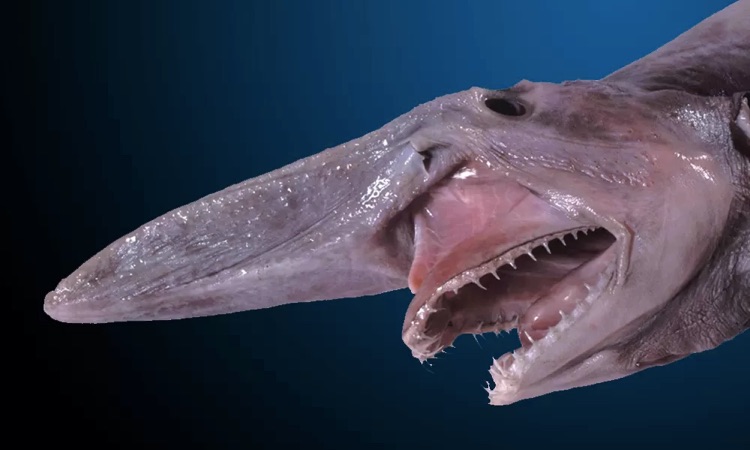
Nurse Shark
The nurse shark is a species of fish from the family Ginglymostomatidae. The IUCN has declared the nurse shark to be endangered due to overfishing practices.
Scientists often study nurse sharks because they are tough and have a higher chance of surviving being tagged. They can grow to be around 10 feet long, with the longest one on record measuring 15 feet.
Sawshark
The most notable feature of the saw shark is its long, serrated snout. The mouth at the end of this protrusion is lined with razor-sharp teeth, giving the animal a striking resemblance to an actual handsaw.
The tiger shark has large, sharp teeth that it uses to tear its prey into pieces. These weird sharks are found in oceans all over the world but they are most common in the Indian Ocean and the Pacific Ocean. They will eat anything from small fish to crustaceans.
Helicoprion Shark
These extinct species of weird sharks known for its “tooth whorls” is a very interesting addition to this list. The only relics that remain from these animals are the tooth whorls themselves, which give scientists today minuscule insight into what they used to look like.
Some have had to use their creative minds and deduction skills in order to come up with contemporary depictions of these creatures.
According to where the “tooth whorl” was discovered, scientists estimate that the shark lived 290 million years ago around North America, Eastern Europe, Asia, and Australia. Measuring 18 inches (45 cm) long from end-to-end of its tooth coil, it’s entirely possible that the fish was 33 feet (10 meters) in length.
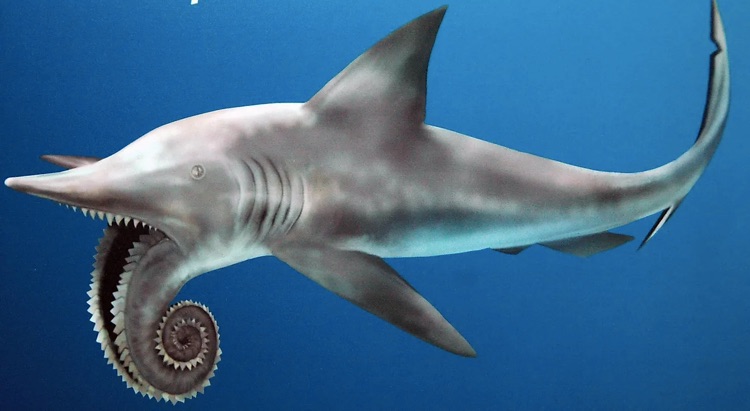
Megalodon
The megalodon was a gigantic shark that lived millions of years ago. It is the largest fish ever documented to date. Given its size and historical significance, it’s no wonder this creature has captured the public imagination through its many depictions in film and television.
The so-called Great White Shark was a massive animal that went extinct at some point during the Miocene or Pliocene epoch. Climate change, sea level fluctuations, and glacial expansion were responsible for its extinction.
They could grow to be between 60 feet (18 meters) and 80 feet (25 meters) in length. In comparison, modern sharks are only 20 feet long (6m).
Basking Shark
The basking shark is a large fish with a strange mouth that can see part of its skeleton when open.
The largest recorded length of this filter-feeding creature is twenty-six feet. It’s often a mottled grey-brown color and has unique, large features. It inhabits temperate oceans worldwide.
The basking shark gets its name from its habit of floating near the surface of the water with its mouth open, straining food through filters.
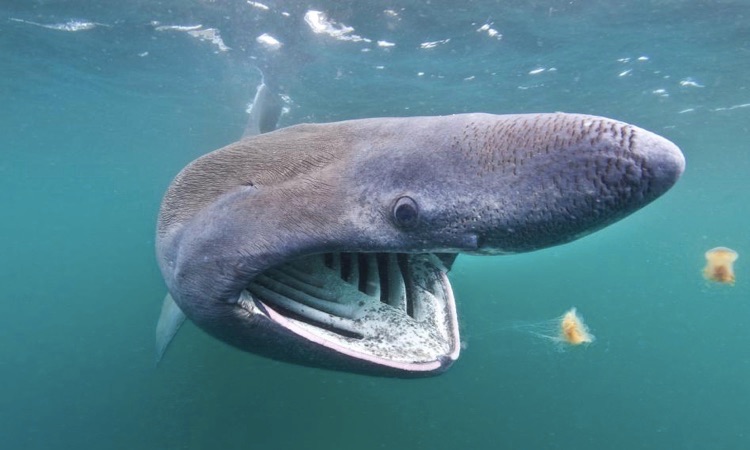
Wobbegong
There are twelve species of carpet shark, and the wobbegong is one of them. Carpet sharks belong to the family Orectolobidae.
Sharks enjoy living in the eastern Indian Ocean and tropical waters near the Pacific Ocean. They got their name from an Australian Aboriginal term that means “shaggy beard.” This is referring to the growths below their mouths which look like beards of sorts.
These strange sharks predominantly reside on the seafloor and are not considered to be large, growing only up to around 4 feet in length.
Greenland Shark
Greenland sharks are deep-sea creatures that live in the Arctic and North Atlantic. Their flesh has high levels of urea and TMAO, which produces a natural antifreeze that allows them to live in cold waters between -1 and 10 degrees Celsius.
The flesh of these animals is poisonous, but they are still consumed in Iceland. The meat has to be processed for several months before it becomes edible.
Based on the sharks studied, scientists have discovered that they are in fact the longest-living vertebrate. The age of these sharks ranged from 272 to 512 years old! And they don’t even reach sexual maturity until 100 years or older.
Hammerhead Shark
The hammerhead shark is admired the world over for its unique appearance. It gets its name form the shape of its head, which happens to resemble a hammer in some ways.
It’s found along coastlines and continental shelves. It’s a loner when it comes to hunting at night, but during the day you can find this fish swimming in schools. They grow anywhere from 2 ft 11 in to 19 ft 8 inches long and they weigh an average of 6.6 to 1,278 pounds.
Cookie Cutter Shark
The cookie cutter shark, or Isistius brasiliensis, is a type of parasite. The shark gets its name from its habit of biting round pieces out of other animals and even non-organic material.
This creatures is classified as a facultative ectoparasite, which means it usually lives off other organisms. It’s an ambush predator, meaning it waits for its prey to come to it. Interestingly, this creature also migrates up from around 2 miles below the ocean’s surface daily.
This shark is one of the smallest, only reaching 22 inches or 56 centimeters at full maturity.
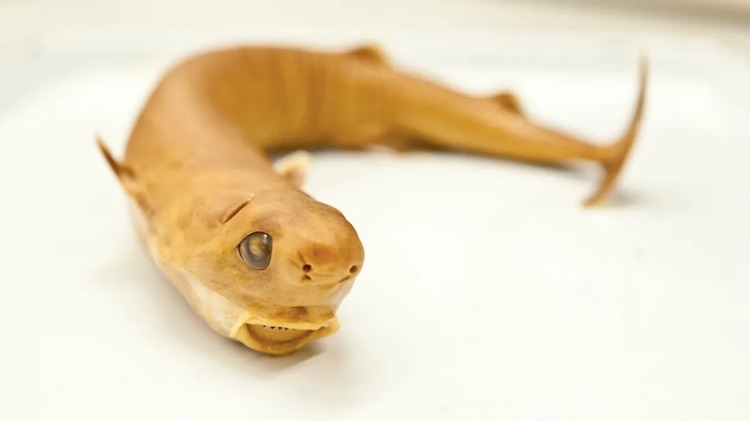
Frilled Shark
The German ichthyologist Ludwig H.P. Döderlein discovered the frilled shark in the 19th century, which is often referred to as a “living fossil” due to its eery appearance and unusual mouth shape.
The analyzed specimens by scientists are typically 2 meters, or 6.6 feet in length. These weird sharks have a dark brown to grey eel-like body with amphistyly, meaning the articulation of the jaws connects to the head.
The frilled shark is present in both the Atlantic and Pacific oceans, typically near outer continental shelves and upper slopes of continents.

